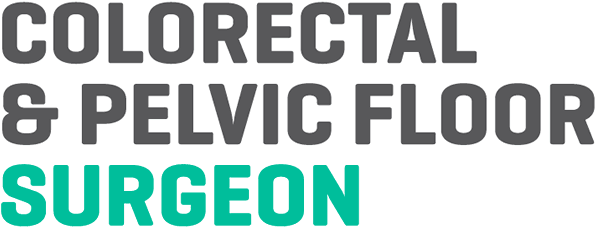- Abscess Incision and Drainage
- Advancement Flap Repair
- Anal Bulking
- Anal Tattooing
- Botulinum Toxin Injection
- Colectomy
- Delorme’s Procedure
- ELAPE Procedure
- Femoral Hernia Repair
- Fistulotomy
- Haemorrhoidectomy
- HALO-RAR Procedure
- Inguinal Hernia Repair
- Intersphincteric APR
- Lateral Internal Sphincterotomy
- Low Anterior Resection
- Pelvic Organ Prolapse
- Perineal Rectosigmoidectomy
- Rectoanal Repair
- Rubber Band Ligation
- Stapled Haemorrhoidopexy
- Stoma Creation
- Stoma Reversal
- Transanal Rectocoele Repair
- Umbilical Hernia Repair
Rectoanal Repair
A rectoanal repair* is an operation performed to reduce the symptoms of an internal rectal prolapse. It is used when the mucosa (lining) of the rectum has fallen down from its normal position. The repair is done through the anus, so there are no incisions on the outside skin. It is often used in frailer older patients who are not fit enough for an operation through the abdomen, for people with significant medical conditions in addition to their rectal prolapse and residual prolapse symptoms after rectal prolapse repair. It can also be performed if it is the patient’s preference.
The procedure involves placing a running stitch along the length of the prolapsed mucosal lining of the rectum. The rectum prolapses as a cylinder, so four running stitches are placed starting 2 cm above the anus and continuing upwards from the anus for 3-–5 cm. This running stitch is then tightened to draw the lax tissue upwards. Rectoanal repair surgery has the combined effect of drawing the prolapsed rectal tissue back up to its correct place inside the rectum, and holding it there.
A rectoanal repair is done as a day-stay procedure under general anaesthesia, so you will not feel any pain. You will need to fast from midnight on the night before if your surgery is scheduled for the morning, or from 7 am if it scheduled for the afternoon. The whole procedure takes about 30 minutes. You will have the opportunity to discuss fully all the risks and benefits of this operation with me before signing your consent form.
No special bowel preparation is necessary before a rectoanal repair, unless you are also having a colonoscopy in the same sitting. You will receive an enema an hour or so before your surgery. You will be given a long-acting antibiotic in the anaesthetic room and an injection of local anaesthetic to help keep you pain-free in the 6 hours following your surgery.
After the operation you will be transferred to the recovery area and then to the ward. You should be able to go home the same day, but sometimes patients may need to stay longer. You should not drive after your surgery, so a friend or relative will need to take you home.
Some degree of pain is common after a rectoanal repair when your local anaesthetic wears off. The discomfort will get better, but may take up to 4 weeks to resolve completely. It is important to keep your bowel movements soft and regular during this time. To prevent constipation, eat foods high in fibre, and drink plenty of water (6–8 glasses a day).
Analgesia, laxatives and a 5-day course of antibiotics will be given to you to take home. It is best to keep up with the analgesia and laxatives until your bowels are moving and any discomfort is manageable. Laxatives may need to be continued for up to a month after surgery.
You can expect minor bleeding after your surgery, and a sanitary towel changed twice daily will help to prevent staining of underwear. It is normal to notice bleeding after you have opened your bowels, but if the amount of blood is more than a couple of teaspoons a day, please let my office know.
Exactly when patients can resume driving after this type of surgery is determined on a case-by-case basis. This is normally 1–2 weeks, but will be discussed with you after your surgery. Please let your insurance company know when you have been given the all-clear to resume driving.
Patients are usually able to return to non-strenuous activities a week after a rectoanal repair, and resume all normal activities, including going back to work, within 2 weeks. Some people do take longer to recover.
A follow-up appointment in the clinic will be arranged in 1–2 weeks after your surgery to check your wound and discuss any further management if required.
*A rectoanal repair is also used to treat patients with haemorrhoids. However, when used for haemorrhoids, it is the second stage of a procedure called HALO-RAR, where HALO stands for “haemorrhoidal artery ligation operation”, and RAR stands for rectoanal repair.

